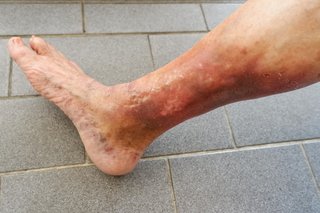Varicose eczema is a skin condition that affects the legs. It occurs in a small minority of people with varicose veins.
Varicose eczema is also known as:
- venous eczema
- gravitational eczema
- stasis eczema
It tends to be a long-term problem. But treatment can help keep it under control.
Symptoms of varicose eczema

Like all types of eczema, skin affected by varicose eczema becomes:
- itchy
- red and swollen
- dry and flaky
- scaly or crusty
You might find your symptoms get better for a while or become more severe.
Your legs may swell. This usually happens towards the end of the day or after long periods of standing. Varicose veins (swollen and enlarged veins) are often visible on the legs.
Other symptoms
Some people also have other symptoms, such as:
- brown discolouration of the skin
- small, white scars (atrophie blanche)
- eczema affecting other parts of the body
Other types of eczema
Eczema is the name for a group of skin conditions that cause dry, irritated skin. Other types of eczema include:
- atopic eczema (also called atopic dermatitis) -this is the most common type of eczema
- contact dermatitis - when the skin becomes allergic to a substance such as soap or detergent, a metal or plant
- discoid eczema - circular or oval patches on the skin
Related topic
Read more about eczema
Content supplied by the NHS and adapted for Ireland by the HSE
